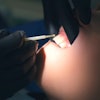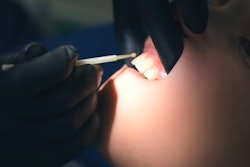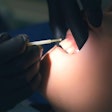When used in school-based dental programs, silver diamine fluoride (SDF) may offer better long-term caries treatment than atraumatic restorative treatment (ART), according to a study published recently in JAMA Network Open.
Furthermore, using minimally invasive techniques like SDF in children at school may help reduce health disparities, the authors wrote.
“This study suggests that SDF, used as part of school-based dental care, can effectively control caries,” wrote the authors, led by Ryan Richard Ruff, PhD, of the New York University Department of Epidemiology & Health Promotion (JAMA Netw Open, June 9, 2025, Vol. 8:6, e2513826).
This cluster randomized clinical trial, known as the CariedAway study, was conducted from February 2019 to June 2023 at 48 primary schools across New York City. A total of 1,668 children were included in the final analysis, with participants followed for up to four years. The trial aimed to assess whether SDF was noninferior to ART for two-year caries arrest and to glass ionomer cement sealants for four-year prevention, they wrote.
Participating schools had to have at least 50% Black and/or Hispanic or Latino students and at least 80% of students receiving free or reduced-cost lunch, reflecting areas with the highest disease burden. Treatments were administered twice a year, and analysis focused on children ages 5 to 13 with at least one follow-up and one carious tooth surface.
Of the participants analyzed, 1,066 (63.9%) had between one and three decayed tooth surfaces, 314 had one, 494 had two, and 258 had three. In the SDF group, 5,651 carious surfaces were treated, with 2,167 showing further decay, resulting in a surface-level failure rate of 38.3%. In comparison, the ART group had 4,647 treated surfaces and 2,116 failures, a rate of 45.5%, they wrote.
Individual-level failure rates were 45.5% for SDF (392 of 861) and 53.3% for ART (430 of 807). While adjusted analyses showed no significant difference in recurrent failure risk, SDF slightly outperformed ART at the individual level, with an incidence rate ratio of 0.96 (95% confidence interval, 0.91 to 1.02; p = 0.23).
However, the study had limitations. Gaps in care during COVID-19 may have led to the loss of primary teeth, causing follow-up on those surfaces to stop and resume only if new permanent teeth later showed decay, the authors added.
“Incorporating minimally invasive techniques in schools can help improve access to critical preventive oral medicine and decrease health inequities,” Ruff and colleagues concluded.




















